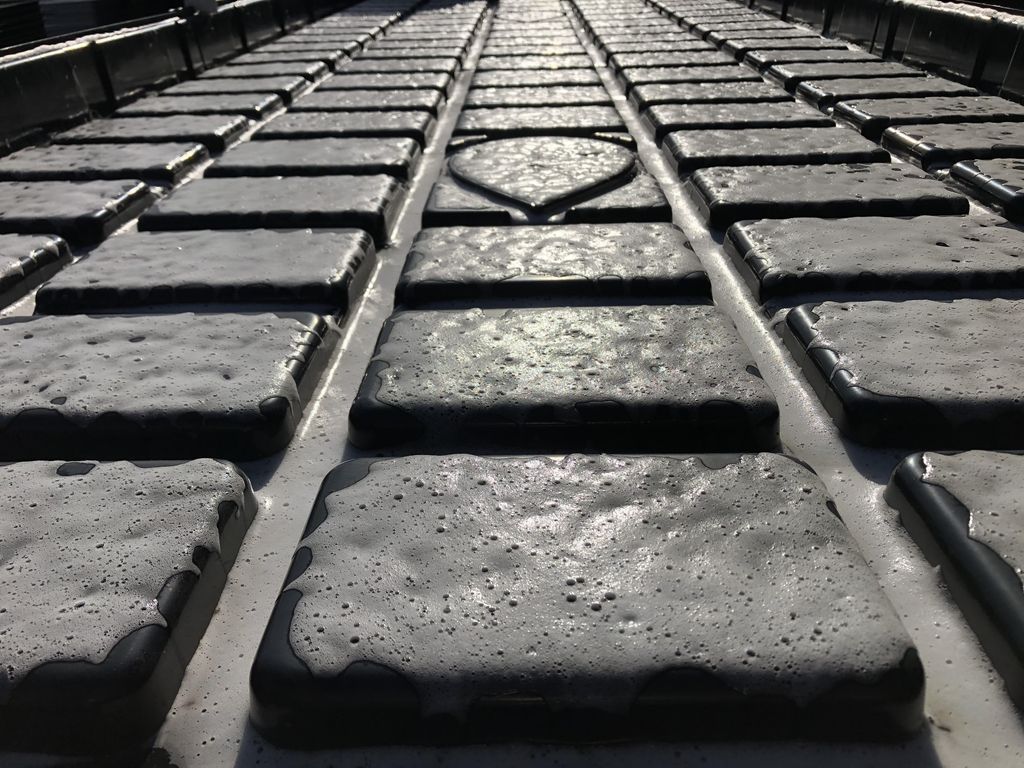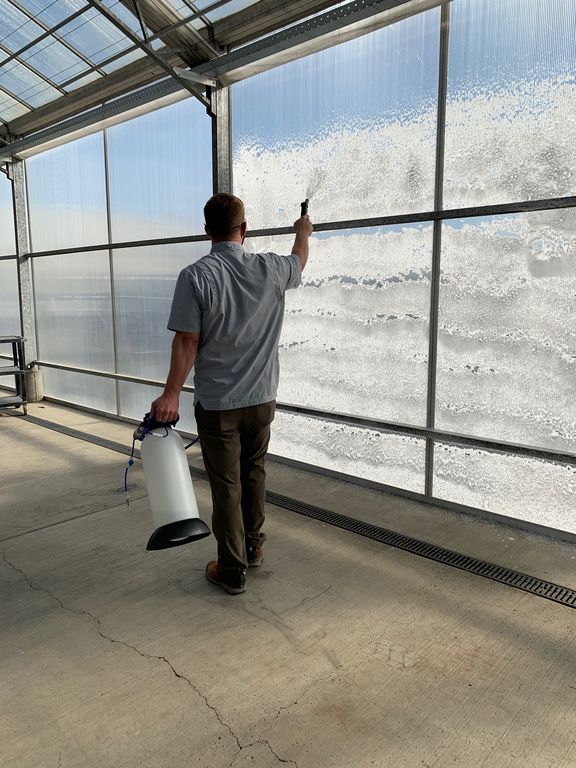Reset & Reuse
It’s no secret that cannabis cultivation is resource-intensive.
A 2021 study in the Journal of Cannabis Research1 reiterated this point, concluding that both indoor and outdoor cultivation is water-intensive and energy-intensive—and can lead to pollution, diversion and increased emissions of greenhouse gasses. While cannabis’ remediation properties—the ability to absorb and store contaminants in the air and soil—can help undo some of these damages, this can also lead to soil erosion.
Because of this tax on resources, it is important that growers focus on reusing as much as they can. There are ways you can repurpose, reuse and reset aspects of your grow to keep waste out of landfills. Not only is this important for the environment, but it also provides security against global issues—things like supply chain backups and inflation—that impact the costs involved in cultivating your crops.

By focusing on reusing, growers can avoid being at the mercy of the supply chain and minimize waste—simultaneously.
The importance of reusing equipment:
Minimizing waste is a primary reason for reusing and repurposing equipment and supplies in your grow, but it isn’t the only reason. In addition to environmental concerns, rising costs, inflation, overhead costs and shipping and supply chain issues can all impact your cultivation efforts.
Having the knowledge to properly sterilize and reuse equipment—rather than repurchasing with every cycle—will save you time and money, cushion the blow of economic forces that are beyond your control and minimize the waste involved in production.
What can be sanitized & reused?
Not everything in the grow can be reused. Some products and supplies have become so accessible and affordable that sterilizing them is actually more costly than replacing them. (Disposable scalpels are a perfect example.) With that said, most aspects of your grow can be reused for at least two cycles.
Basically, anything that doesn’t have a soft metal component, an electric sensor, or a bulb can technically be sanitized & reused.
Things that can be sanitized & reused:
- pots & trays
- tubing & drip lines
- pumps & injectors
[Make sure the pumps don’t have soft metal components. Most sump pumps and impeller styles are designed for corrosive materials like fertilizers and can be sterilized—but it is important to check when purchasing and before sterilizing to avoid issues.]
- tools
[Cheap, disposable options like scalpels aren’t worth reusing, but if you paid more than $10 for your tool, you can probably sanitize and reuse it if it doesn’t have soft metal components.]
- lighting
[LEDs have emerged as the most sustainable fixtures. They use the least amount of electricity and don’t have the other environmental controls that HID lights require, such as air-conditioning and fans. Back in the day, you’d get maybe three cycles out of a light; they took more time to ignite, were harder to get to full burn and would still produce lumens after wear and tear—but not at the spectrum needed. LEDS can hold their spectrum and are typically rated for 10k+ hours of continuous usage, which means if you are only running it as your bloom light, you double that lifespan.]
What about substrates?
Unless you are extremely confident with the pathogen and pest pressure within your substrate, we don’t advocate reusing. While you cannot reuse your substrate in most cases, you can source more sustainable options—like coco coir. Coco coir, a natural fiber derived from the outer husk of coconut, is one of the most sustainable substrates that you can use. It is already the byproduct of another industry and doesn’t require the intensive harvesting that other mediums demand. The downside to coco is that you have to ship it across a longer distance. If you factor in the costs of shipping—emissions, fossil fuels, labor—that can detract from its sustainability.
Peat moss, on the other hand, is the opposite. It takes hundreds of years to harvest peat again from the same bog. By mining for peat—and waiting for bogs to regrow only to repeat the process again—we are causing long-term damage to the Earth.
While some might argue that “soil” is the most sustainable substrate, unless it is incredibly rich to begin with you will need to spend lots of time and money amending it. That means, once again, being at the mercy of the supply chain.

How to properly sterilize, sanitize & reuse your equipment:
When sterilizing, the most important differentiation to make is whether you are cleaning hard surfaces or soft surfaces (typically, soft metals like tin and brass).
Hard Surfaces
Use SaniDate 5.0 or Zerotol 2.0 at a 1:100 concentration (37ml/gal). (Some like to also use a biofoaming agent to help with contact time. It breaks down into inerts.) The main difference between SaniDate and ZeroTol is that SaniDate is rated for commercial food safety, as its on-label use covers human health pathogens such as listeria, E. coli, and salmonella. ZeroTol can still provide superior levels of sanitation, but no claim will be granted as the verbiage is not on the label. Regardless of which product you choose, the label is law; regulatory agencies go by what the label says. If you are in a commercial facility, it is important to have the ability to use food grade standards since cannabis is a consumable crop.
Drip Lines & Pumps
Cleaning these systems is a two-step process. First, pull out all emitters and soak in SaniDate 5.0 or Zerotol 2.0. Plug the holes of your lines and use Green Clean Acid Cleaner for 1-2 hours, allowing it to sit. This works like sandpaper in your lines, wearing at the bio burden or mineral scale, roughing it up and creating surface area. The first step is essential for flush as it creates more cracks and crevices to break up residuals. Then, follow up with a SaniDate 5.0 or ZeroTol 2.0 with 37ml per gallon. Fill the system and let it sit overnight.
Pumps can be soaked overnight as well. Most hydroponic pumps are impeller pumps and made of plastic. Anything made for fertilizer is made for corrosive materials. Stay away from any pumps that contain soft metals or that are not rated for corrosive applications.
Soft Metals
Isopropyl alcohol is best in these situations. You can also use any non-corrosive disinfectant of your choice. The downside to isopropyl alcohol is that it has a short-lived chemistry that evaporates quickly at room temperature. For thorough sanitation and to effectively remove threats, you need contact time, sometimes up to 5-10 minutes, which is why other options are recommended unless you are cleaning soft metals.
A Few Helpful Notes
You need to let your sterilizing agent dry for its allotted re-entry interval (REI). This allows the chemistry to become dry and inert. For example, ZeroTol 2.0 has an REI of one hour. After an hour, the components of ZeroTol have dried and become harmless to the touch.
Home growers with smaller irrigation, tubing, or drip systems may opt to soak everything in one vat of sterilizing agent, but disassembly is often preferable as it accounts for small surface areas like threaded ports.
Wear eye protection when sterilizing, even if using a non-corrosive disinfectant. It’s a good practice to have—all it takes is the wrong slosh of a bucket or splash from a tool to spray your eyes and cause damage.
The importance of food grade residuals:
When considering what sterilizing agents to use, remember that whatever does not evaporate is left behind—and that can contaminate your grow and the environment.
Even something like bleach leaves sodium residue on the surface that you have to rinse away for a truly sterilized surface. If your water source (such as a hose bib from a municipal water supply) is not sterilized, then that final rinse potentially re-contaminates the surface you were trying to sterilize. Any cleaner that has to be rinsed off is not optimal as it can reintroduce harmful biology. Additionally, whatever is being rinsed off is eventually discarded, adding to waste and potential pollution concerns.
For these reasons, it is ideal to use cleaners and disinfectants that break down into food grade inert compounds that are harmless to you and the world around you.
Reusing equipment isn’t a permanent solution; stuff breaks and degradation is real. But when you’re growing at scale or over a long period of time, it’s much cheaper to take the time to sterilize what you’ve got than it is to buy pallets of new stuff—just to throw it away and repeat the cycle again next year.
Sources:
1 Zheng, Z., Fiddes, K. & Yang, L. A narrative review on environmental impacts of cannabis cultivation. J Cannabis Res 3, 35 (2021). https://doi.org/10.1186/s42238-021-00090-0
Subscribe to our Substack to receive new content automatically
This article is featured in Vol. 3 of The ETHOS Magazine.
Grab a collector's edition of the ETHOS magazine in print HERE.